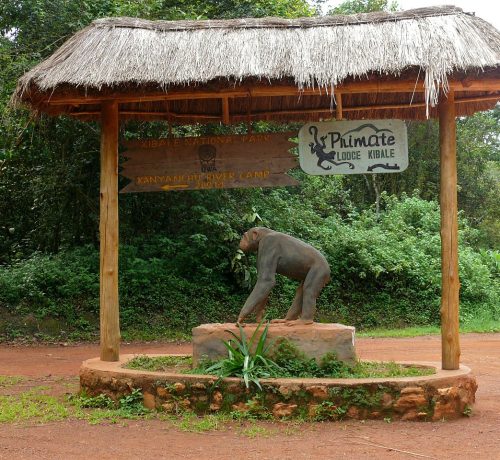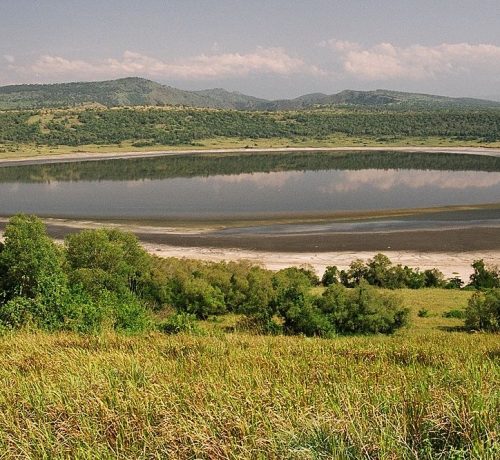National Parks in Uganda
Uganda the “Pearl of Africa” is blessed with over 10 national parks Managed by Uganda Wildlife Authority (UWA), the parks offer ‘traditional’ savannah safaris along with boat tours, forest hikes, mountain climbing and wildlife research activities.

Bwindi NP
This biologically diverse region also provides shelter to a further 120 mammals, including several primate species such as baboons and chimpanzees, as well as elephants and antelopes. There are around 350 species of birds hosted in this forest, including 23 Albertine Rift endemics.
The neighboring towns of Buhoma and Nkuringo both have an impressive array of luxury lodges, rustic bandas and budget campsites, as well as restaurants, craft stalls and guiding services. Opportunities abound to discover the local Bakiga and Batwa Pygmy cultures through performances, workshops and village walks.

Kibale NP
Kibale National Park contains one of the loveliest and most varied tracts of tropical forest in Uganda. Forest cover, interspersed with patches of grassland and swamp, dominates the northern and central parts of the park on an elevated plateau.
The park is home to a total of 70 mammal species, most famously 13 species of primate including the chimpanzee.
It also contains over 375 species of birds. Kibale adjoins Queen Elizabeth National Park to the south to create a 180km-long corridor for wildlife between Ishasha, the remote southern sector of Queen Elizabeth National Park, and Sebitoli in the north of Kibale National Park.
The Kibale-Fort Portal area is one of Uganda’s most rewarding destinations to explore. The park lies close to the tranquil Ndali-Kasenda crater area and within half a day’s drive of the Queen Elizabeth, Rwenzori Mountains and Semuliki National Parks, as well as the Toro-Semliki Wildlife Reserve.

Murchison Falls NP
Murchison Falls Conservation Area ( MFCA ) comprises of Murchison Falls National Park, Bugungu and Karuma Falls Wildlife Reserves. This is where the Nile explodes through a narrow gorge and cascades down to become a placid river whose banks are thronged with hippos and crocodiles, waterbucks and buffaloes. The vegetation is characterised by savannah, riverine forest and woodland. Wildlife includes lions, leopards, elephants, giraffes, hartebeests, oribis, Uganda kobs, chimpanzees, and many bird species.
The Murchison National park is suited in the northern part of Albertine Rift Valley. A place where the massive Bunyoro escarpment amalgamate into the enormous plains of Acholi land. It’s well known to be one of Uganda’s ancient conservation areas. In 1926, it was known as a game reserve set up to protect the savannah grassland that was talked about by Winston Church chill in 1907 as the great Kew Gardens along with the wildlife blended on an restricted land .
The park is acknowledged for receiving prominent international visitors. Winston Churchill is a great man who is accredited for having done activities such as boat cruise, hiking as well as cycling the Nile corridor of the falls. Later on, he was followed by his predecessor who is believed for have spent a lot of money US$1.8m on his hunting safari in Uganda.

Queen Elizabeth NP
The park has a variety of Flora and Fauna and it’s acknowledged to be a habitat for over 95 mammal species with about 612 species of birds. The various species in this park, has made it a unique park most liked by tourists. Geographers will say that the park has around 57 vegetation but in actual sense, it has five levels of vegetation. Namely bushy grassland, Acacia woodland, Lakeshore or swamp vegetation along with forest grassland.
The grasslands of the park settles wildlife such as Cape buffalo, Uganda kob, waterbuck, warthlog, lion, leopard, hyena, giant forest hog as well as elephants.Topis can only be discovered in Ishasha and forest primate found in Kyambura gorge in addition to Maramagambo forest.
Africa has some protected areas. Therefore the park’s remarkable birdlist that to exceed that of the neighboring Virunga National Park. Among these include African skimmer, Chapins flycatcher, Pink-backed pelicans, Papyrus canary, Shoebill stork, martial eagle, black-rumped buttonquail as well as the great flamingos.

Semuliki NP
Semuliki National Park lies on Uganda’s border with the Democratic Republic of the Congo. The Rwenzori Mountainsare to the south-east of the park, while Lake Albert is to the park’s north.[1] The park lies within the Albertine Rift, the western arm of the East African Rift.[3] The park is located on a flat to gently undulating landform that ranges from 670 to 760 m (2,200 to 2,490 ft) above sea level.[1]
The park experiences an average rainfall of 1,250 mm (49 in), with peaks in rainfall from March to May and from September to December. Many areas of the park experience flooding during the wet season. The temperature at the park varies from 18 to 30 °C (64 to 86 °F), with relatively small daily variations.[1]
The Park borders the Semuliki and Lamia rivers, which are watering places for many animals. The park has two hot springs in a hot mineral encrusted swamp. One of the springs – Mumbuga spring – resembles a geyser by forming a 0.5 m high fountain. These hot springs attract a large number of shorebirds and they are a source of salt for many animals.
From 1932 to 1993, the area covered by Semuliki National Park was managed as a forest reserve, initially by the colonial government and then by the Ugandan government’s Forest Department. It was made a national park by the government in October 1993 in order to protect the forests as an integral part of the protected areas of the Western Rift Valley.
